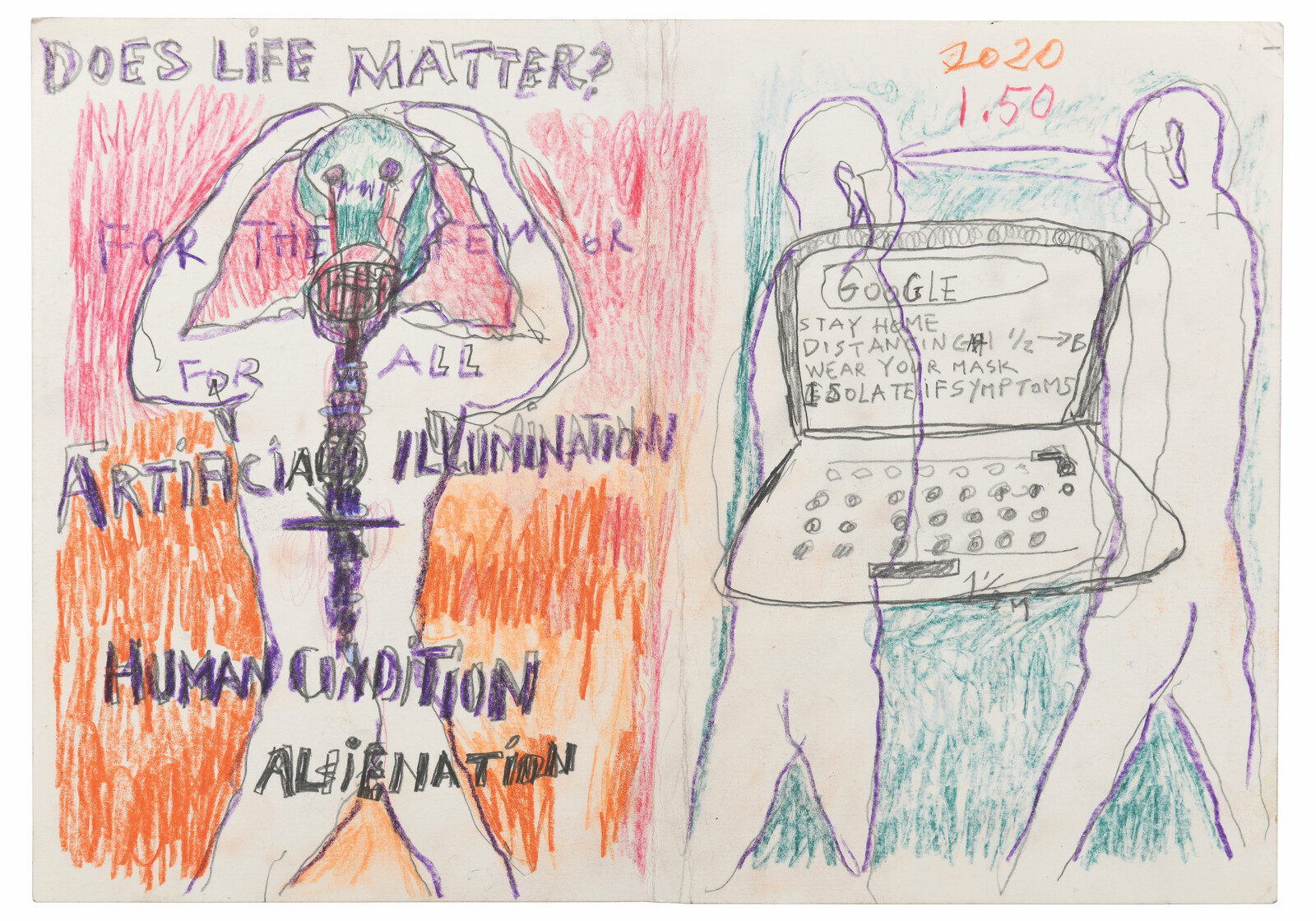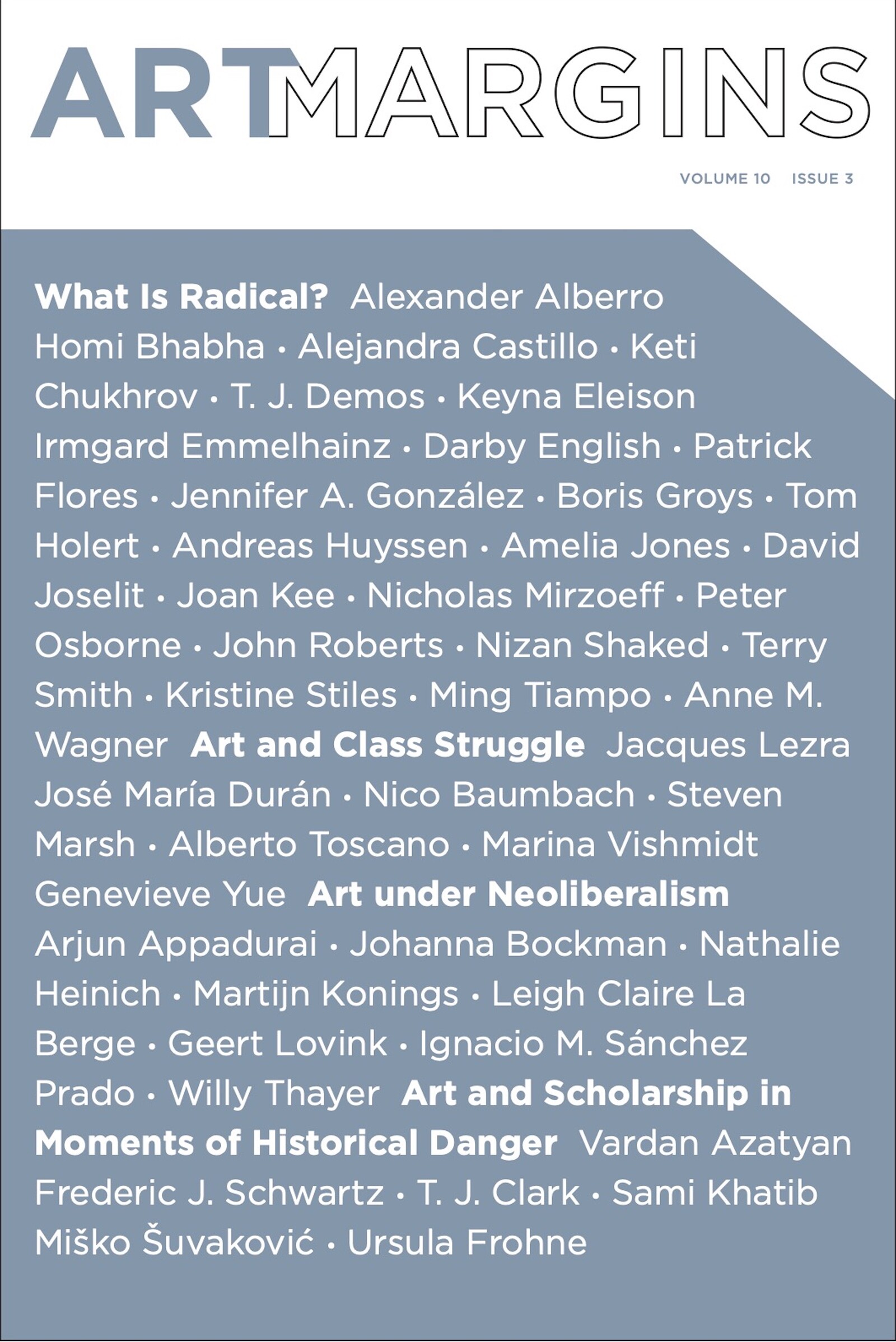ARTMargins anniversary issue (volume 10, issue 3, October 2021) and upcoming public discussion.
The editors of ARTMargins and the MIT Press celebrate the journal’s tenth publication anniversary with a special issue of the journal dedicated to the question “What is Radical?”. We have invited friends and colleagues to respond to this and a series of other questions that occupy us in these troubled times: art and class struggle; art and scholarship in moments of historical danger; the relationship between art and neoliberalis.
Respondents: Alexander Alberro, Homi Bhabha, Alejandra Castillo, Keti Chukrov, T.J. Demos, Keyna Eleison, Irmgard Emmelhainz, Darby English, Patrick Flores, Jennifer A. González, Boris Groys, Tom Holert, Andreas Huyssen, Amelia Jones, David Joselit, Joan Kee, Nicholas Mirzoeff, Peter Osborne, John Roberts, Nizan Shaked, Terry Smith, Kristine Stiles, Ming Tiampo, Anne M. Wagner, Jacques Lezra, José María Durán, Nico Baumbach, Steven Marsh, Alberto Toscano, Marina Vishmidt, Genevieve Yue, Arjun Appadurai, Johanna Bockman, Nathalie Heinrich, Martijn Konings, Leigh Claire La Berge, Geert Lovink, Ignacio M. Sánchez Prado, Willy Thayer, Vardan Azatyan, Frederic J. Schwartz, T.J. Clark, Sami Khatib, Miško Šuvaković, Ursula Frohne.
The special issue includes two specially commissioned artists’ projects by Anna Boghiguian (Ghosts of Past Events Hover Over Us in the Hall of Mirrors) and ICEbox Collective (Taxonomy of Breathing), supported by the Sharjah Art Foundation.
In connection with the anniversary issue, ARTMargins editors Karen Benezra, Octavian Esanu, Pedro Erber, Elizabeth Harney, Angela Harutyunyan, and Sven Spieker will come together for a public conversation about the journal and the challenges of academic art publishing. The discussion will take place online on Saturday, February 26 from 10–11am EST, and will be moderated by Iftikhar Dadi.
“Radical” is associated with a type of thinking or acting that seeks to rebuild everything from the ground up, and the term is ubiquitous in contemporary art and criticism. But what does it mean to be radical? Can academic, including art historical, scholarship aspire to being or acting radical? And what is radical art, especially after the pivot, since the 1960s, to post-art positions that make radical art hard to define in isolation? As the responses we publish in this anniversary issue seem to show, there is no single, let alone simple, answer to these questions, much as there is no simple answer to the question of how we can think about radicalism from within the totality of our neoliberal reality.




